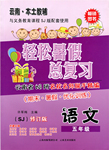题目内容
I decided a few months ago that l was going to treat myself to a 4-day getaway from Los Angeles and visit Chicago. I turned in some long-saved frequent flier miles(航空积分里程) for the airplane ticket, but had to shell out cash I really couldn’t afford for the hotel. I found a travel website where a discounted promotional 3-night stay was purchased from a recently opened hotel.
About three weeks before the trip, I had to regretfully cancel and only then realized the room, while transferable to another person, couldn’t be changed to a later date and wasn’t refundable(可退款的).For the next two weeks, I tried selling it on Craig’s list with no success. Five days before the “big weekend” I gave up trying to spend any money and decided I’d contact some friends who live in Chicago and offer someone a free “staycation”. After trying a handful of people all of whom already had their own plans, I was determined to have the room not go to waste.
That’s when it suddenly occurred to me that I was looking at the rooms in the wrong way. Instead of viewing them for vacation purposes, surely there must be a way to put them to good use, and that was when the idea that some sort of shelter might be able to use it hit me. I finally found one whose focus is aiding victims of domestic violence. This particular one was willing to listen to my out-of-left-field story and facilitated the transfer of the rooms. The shelter was working with a desperate woman and her young daughter, who were fortunately able to make use of the room.
1.What did the author decide to treat himself to?
A. A big meal in Chicago.
B. A 4-day travel.
C. A holiday abroad.
D. A get-together with family.
2. The author purchased a 3-night stay from a newly-opened hotel .
A. to act as a promoter
B. to experience e-business
C. to get a free air ticket
D. to save some money
3. The room the author booked could only be .
A. cancelled within 24 hours
B. changed to a later date
C. transferred to another person
D. refunded half of the money
4. What did the author decide to do with the room at last?
A. Sell it online.
B. Let it go to waste.
C. Use it to help strangers in need.
D. Offer it to one of his friends.
 轻松暑假总复习系列答案
轻松暑假总复习系列答案

